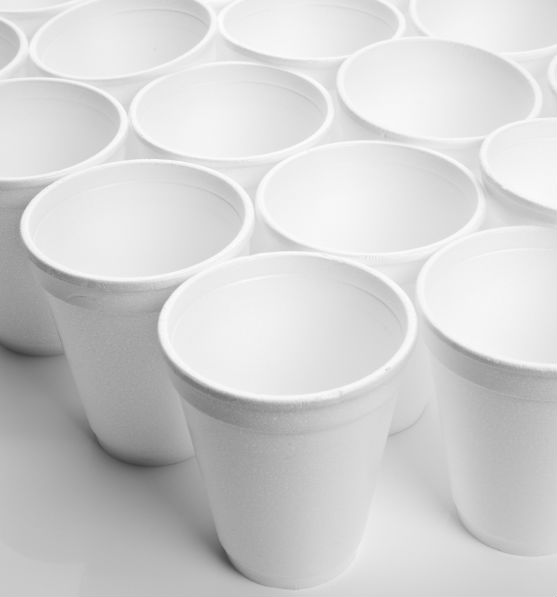If you are like me, you would guess a paper cup is much more eco-friendly then its evil step sibling, the Styrofoam cup. However, in many cases, a Styrofoam cup is the greener option. Most people instantly think paper is more eco-conscious because it is recyclable, but truth be told, most paper cups intended for hot beverages are not recyclable. Here is a quick overview of the two contenders.
Speaking of cost, the typical paper cup costs around two-and-a-half times the amount of a Styrofoam cup. Aside from the production of the cup, if you add the cardboard sleeve and its production, raw material, energy and shipping needs, you need to throw in an additional 2-3 cents per cup. Modifying or customizing a Styrofoam cup is nearly half the price of customizing a paper cup. The bottom line is that paper cups are more than double the price to produce and require a cardboard sleeve if you want to save your fingertips.
When it boils down, it appears that going with Styrofoam is more eco-friendly compared to a paper cup. There are better ways to drink your hot beverages, such as using a reusable tumbler, coffee mug or other container you wash and use over and over. If you have to use a disposable paper cup, find out if the establishment you are buying your drink from uses biodegradable cups. If they do, that is the way to go. As the cup industry moves away from the traditional method of manufacturing the current unrecyclable paper cup into a more biodegradable version, the battle between Styrofoam and paper cups may take a turn. In a scenario where the paper cup is biodegradable, a paper cup may win.
Styrofoam vs. Paper Cups: Which is More Eco-Friendly?
When comparing paper and Styrofoam cups, the eco-friendliest may surprise you.
